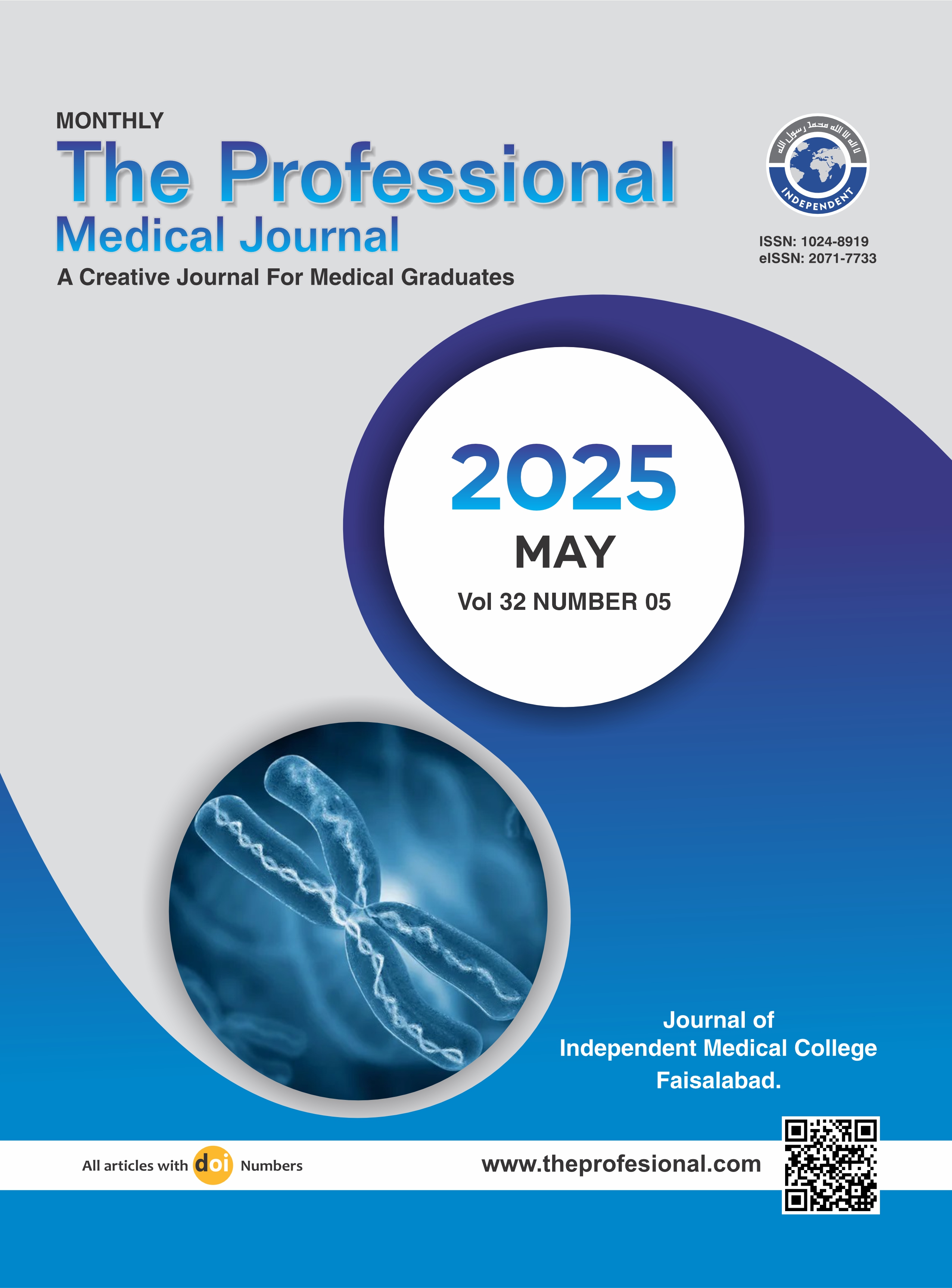A comparative analysis: Success rates of Endoscopic Endonasal versus External Dacryocystorhinostomy with silicon tube.
DOI:
https://doi.org/10.29309/TPMJ/2025.32.05.8884Keywords:
Dacryocystitis, External Dacryocystorhinostomy, Endonasal Endoscopic DacryocystorhinostomyAbstract
Introduction:
Dacryocystorhinostomy (DCR) is a standard surgical treatment for nasolacrimal duct obstruction. it can be performed via external (E-DCR) or internal (EE-DCR) approaches, with each offering distinct advantages. E- DCR is well-established with high success rates but requires a longer recovery time. EE-DCR, being minimal invasive, Offers a faster recovery and better cosmetic outcomes, though requires longer recovery time. This study compares the anatomical and functional outcomes of EE-DCR and E-DCR with silicon tube.
Setting:
This study was conducted at Ziauddin Hospital, Karachi, over a period of 5 years, from 1st July 2019 to 30th June 2024. Ethical approval was obtained from institutional review board (Ethical approval code: 9330924AKOPT, dated October 28, 2024.)
Material and Methods:
A total of 140 patients were included, divided into two groups of 70 each, EE-DCR and E-DCR. Inclusion criteria were patients aged 18-70 with nasolacrimal duct obstruction and a follow-up of at least one year. Data was analyzed using SPSS version 23, with significance level of p < 0.05. Outcomes such as nasolacrimal duct patency and symptom improvement were assessed during follow-up at 1st day, 1st week, 1st month, 3rd month, 6th month and 1 year.
Results:
The mean age of patients was seen as 42.43 ± 10.9 years in EE-DCR and 49.00 ± 9.01 years in E-DCR group. Anatomical success rates for both groups at 3, 6 and 12 months were comparable, with no statistically significant difference (p-value > 0.05). At 3rf month, 87.14% of the EE-DCR patients and 91.43% of E-DCR patients showed nasolacrimal duct patency. Similarly, functional success rates were assessed showing 84.29% of EE-DCR and 87.14% of E-DCR patients were symptom- free at 3rd month.
Conclusion:
Both EE-DCR and E-DCR are effective treatments for nasolacrimal duct obstruction.EE-DCR offers advantages like faster recovery and fewer complications, while E-DCR remains reliable for complex cases.
Keywords: Dacryocystitis, External Dacryocystorhinostomy, Endonasal Endoscopic Dacryocystorhinostomy
Downloads
Published
Issue
Section
License
Copyright (c) 2025 The Professional Medical Journal

This work is licensed under a Creative Commons Attribution-NonCommercial 4.0 International License.


